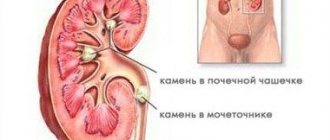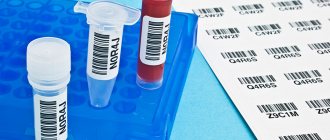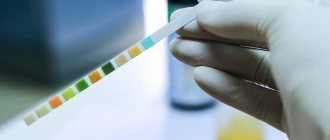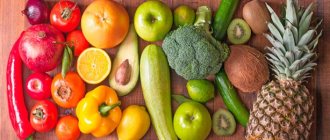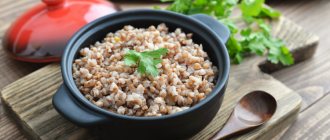Diet for urolithiasis in women menu
Diet for urolithiasis: oxalate stones (oxalates)
Limit: foods rich in oxalic and ascorbic acid, as well as calcium - sorrel, spinach, beets, potatoes, cottage cheese and cheese, beans, figs, parsley, plums, gooseberries, strawberries, citrus fruits, strong tea, coffee, cocoa, chocolate.
Recommended: oatmeal, buckwheat, millet porridge, nuts, carrots, apples, pears, quince, grapes, white and black bread; butter and vegetable oil, boiled meat, poultry and fish, cauliflower and white cabbage, green peas, turnips, cucumbers, apricots, peaches; alkaline mineral waters, kombucha.
Diet for urolithiasis: urate stones (urates)
Limit: concentrated meat and fish broths, offal, sorrel, spinach, peas, beans, beans, red wine, beer, pickles, smoked meats, marinades, coffee, cocoa, chocolate.
Recommended: tea with lemon, citrus juice in between meals (prevents the formation of urates); eat meat, fish and poultry only in boiled form, no more than three times a week; milk and all dairy dishes, eggs, rice and oatmeal, vegetables, fruits, day-old bread, black and red caviar, honey, marmalade, marshmallows, walnuts.
Diet for urolithiasis: phosphate stones (phosphates)
Limit: foods rich in calcium: milk and dairy products, including yogurt, cheese, feta cheese; spices, sauces, savory snacks and seasonings.
Recommended: meat and fish in all types, including mild fish snacks, soaked herring; weak tea and coffee without milk, bread, eggs and egg dishes (1 - 2 times a week), butter and vegetable oil; peas, pumpkin, Brussels sprouts, red currants, sour apples.
The general law for all patients with urolithiasis, regardless of the type of stones, is to drink plenty of fluids . Drink at least 1.5-2.0 liters of fluid per day (including tea and soups). The urine should be “like water”, because with a low concentration of salts, they will not fall out in the form of crystals and lead to the formation of stones!
However, there are often cases when the exact composition of the stones cannot be determined (for example, it was not possible to catch a loose stone, the examination did not reveal biochemical abnormalities). In such cases, the best diet for urolithiasis is to adhere to general recommendations, the main one being drinking plenty of fluids. The diet should be varied, balanced, with enough vegetables and fruits. Avoid coffee and chocolate. And do not forget to periodically monitor the condition of your kidneys using ultrasound and urine tests.
Free consultation with a urologist
Why do kidney stones form?
Different types of stones form in different people for different reasons.
Certain medical conditions, such as high blood pressure (hypertension), diabetes, obesity, osteoporosis, or chronic diarrhea, may increase your risk. Heredity also plays a role in the formation of, for example, oxalate kidney stones. Certain metabolic disorders in your body, such as high levels of calcium or oxalate, which are common components of foods, may also play a role. Some medications and supplements, such as cough suppressants, migraine medications, and antiepileptic drugs, also increase the risk of kidney stones. For stones to form, human urine must be supersaturated with stone-forming (“lithogenic”) compounds, such as calcium, oxalate, and magnesium ions. This means that there is not enough fluid in your urine to dissolve solid particles that can form stones in the urinary system. These compounds also often form crystals when the urine has low levels of substances called "lithogenesis inhibitors", i.e. reducing stone formation. Inhibitors slow the formation and growth of kidney stones. One of the most important inhibitors of lithogenesis is citrate.
Who can get kidney stones?
Every year, more than half a million people seek emergency care for kidney problems. Worldwide, 1 in 10 people can expect to have a kidney stone in their lifetime. In Russia, in 2021 alone, more than 214 thousand people were registered with newly diagnosed urolithiasis. The increase in the incidence of urolithiasis in Russia from 2002 to 2014 was +34.5%. The trouble is that even after removing a stone from the urinary system in 50% of people, kidney stones form again within 10 years.
What are the most common kidney stones?
The most common type of urinary stones are oxalate stones, which are composed of calcium oxalate crystals. According to domestic data, such stones are found in 65% of cases. Next in descending order are phosphate (19%), urate (15%), cystine (1%) stones. Foreign studies say that oxalate forms of urolithiasis occur in up to 80% of cases.
What are oxalates?
Oxalates are salts of oxalic acid. Oxalates are end products of normal human metabolism, but they are also found in various foods (mainly plant foods). After absorption in the intestine, oxalates enter the blood and are then excreted by the kidneys. In urine they bind to other ions, calcium, magnesium and sodium. When an oxalic acid ion combines with a calcium ion, a poorly soluble salt is formed - calcium oxalate. Supersaturation with calcium oxalate is the most important condition for stone formation, since their solubility does not depend on the acidity (pH) of the urine.
Does dietary oxalate intake affect the formation of oxalate kidney stones?
Yes. You should try to avoid foods rich in oxalate to maintain normal levels of oxalate in your urine. You should avoid eating rhubarb, celery, spinach, beets and sesame seeds, all of which have very high oxalate content.
Black tea, chocolate, nuts (including peanut butter), and cocoa contain moderately high levels of oxalates. You don't need to eliminate them completely, but watch the amount you consume.
Does dietary calcium intake affect the formation of calcium oxalate kidney stones?
Interestingly, too little calcium in your diet may actually increase your risk of stone formation by increasing urinary oxalate levels. Daily intake of up to 1000 mg per day is safe for individuals with calcium stones.
Among food products, the highest calcium content is found in dairy products (milk, yogurt, cream and cheese). A normal, varied diet will give you about 500 mg of calcium every day. Approximate calcium content in dairy products:
- milk and yogurt - 120 mg per 100 g
- soft cheese - 400 mg per 100 g
- hard cheeses - up to 1000 mg per 100 g
If you have too much calcium in your urine, you may benefit from limiting your calcium intake, but you should discuss this with your urologist or GP.
Why are oxalate stones dangerous?
The most dangerous complications of urolithiasis, including oxalate kidney stones, are:
- renal colic is a complete blockage of the urinary tract by a stone, leading to an extremely severe attack of pain and fraught with infectious complications;
- acute or chronic pyelonephritis is a bacterial inflammation of the kidney tissue, which can pass into the purulent phase and lead to the formation of purulent cavities (abscesses)
- renal failure is a life-threatening disorder of all types of kidney function, which, among other things, can be caused by kidney damage from calcium oxalate crystals.
h
Are there any general recommendations for preventing the formation of kidney stones?
It is important to lose weight if you are overweight. Increased physical activity should be part of any weight loss program.
Remember to drink plenty of fluids and stay hydrated, especially if you sweat a lot, such as during exercise.
Are there any tests to find out why oxalate stones are forming in my kidneys?
Yes. All patients who have been diagnosed with a kidney, ureter or bladder stone should have blood tests to check their kidney function and make sure their oxalate, uric acid and calcium levels are not elevated. In high-risk stone-passers (young patients and those who have recurrent stones), a 24-hour urine sample should be collected to measure the level of certain chemicals in the urine (called a metabolic disorder test), namely oxalates, calcium, phosphorus, magnesium, citrate. Your urologist or primary care physician can tell you more about this.
What else can I do to prevent oxalate kidney stones?
Only 10-15% of the oxalate in your urine comes from food. Therefore, there is no need to completely remove oxalate-containing foods from your diet. However, you should aim to consume oxalates in moderation (and wisely).
Foods that are particularly high in oxalates should be consumed in minimal quantities.
The following foods are known to have high oxalate content:
- tea and coffee (more than two to three cups per day)
- nuts (such as almonds), sesame seeds, and nut products (such as peanut butter)
- cocoa and chocolate
- some fruits (figs, tangerines, plums, berries and currants)
- rhubarb
- soy products (tofu, soy milk, soy cheese and soy ice cream)
- some vegetables (celery, spinach, leeks, orca, parsley and beets)
Are there any natural remedies to reduce oxalate levels in urine and blood?
Yes, currently there is a modern active complex “Oxalit”, which has a unique set of effects.
The components of "Oxalit" contribute to:
- decreased levels of oxalate and calcium in urine
- increasing the content of antilithogenic substances that block the formation of oxalate stones
- reducing the size and number of oxalate stones formed
- preventing the attachment of calcium oxalate crystals to cells and tissues of the genitourinary system
This is due to the fact that “Oxalite” contains a unique combination of medicinal plants: Fucus vesicularis (containing fucoidan), Phyllanthus niruri and Desmodium styraxolifolia. The complementary effects of these plants allow Oxalite to reduce the absorption of oxalates in the intestines, make calcium oxalate crystals more soluble, make the structure of stones looser and easier to crush, and prevent the formation of new oxalate stones in the kidneys. Moreover, the components of Oxalite protect the kidneys from damage by calcium oxalate crystals, enhancing the antioxidant protection of tissues.
How to take Oxalit?
According to the results of numerous studies, the maximum effectiveness of the components of "Oxalit" is noted when taken prophylactically, for example, in the presence of salts or oxalate crystals in urine sediment, or after surgery to remove a stone, to prevent recurrent stone formation. Since “Oxalit” is a drug that affects metabolism, its greatest effectiveness is observed when taken in a course course lasting from 3 months.
Source: British Association of Urological Surgeons. Leaflet No: 16/114 Page: 4
Questions about the article
Victoria
October 22, 2021 at 09:45 pm
Hello, tell me, is it possible to eat walnuts if you have oxalates?
Anton Evgenievich Rotov
October 23, 2021 at 08:49
I don't see any problems
Oksana
January 27, 2021 at 05:47 pm
Hello! Please tell me, does carbonate atapatite belong to phosphate stones? I read that they are formed as a result of bacterial diseases. Is it so? and is it necessary to follow a diet in this case? Thank you
Anton Evgenievich Rotov
January 28, 2021 at 07:06
Carbonatapatite belongs to the group of phosphate “infection” stones, in the appearance and growth of which urinary infection plays an important role. Important steps in treatment are the most complete removal of all stones and fragments, as well as antibacterial therapy taking into account the sensitivity of bacteria. Diet plays a certain role in prevention, recommendations for which you can find at the link Monitoring urine tests is also required
Antonina
January 25, 2021 at 04:19 pm
Hello Anton Evgenievich, please tell me what tests need to be taken to find out what specific kidney stones are. Ultrasound revealed stones of 4-5 mm. Thank you !
Anton Evgenievich Rotov
January 28, 2021 at 07:12
There are methods that allow us to indirectly guess the composition of stones. These include a biochemical blood test for calcium, uric acid, and phosphorus. Biochemical analysis of 24-hour urine for the main stone-forming elements (calcium, phosphates, uric acid and oxalates). Kidney CT scan (density of stones) provides certain information.
Diet for escalate, urate and phosphate kidney stones
Urolithiasis is a common urological disease in which stones (calculi) form in the kidneys, ureter or bladder. The main reason for the formation of stones is metabolic disorders, so a proper diet is not only an indispensable form of effective treatment, but also the main prevention of urolithiasis. Very often, the presence of stones is detected during a kidney ultrasound, and the patient may not have any symptoms. In the case when the stones reach large sizes and depending on their shape and location, various symptoms may appear:
- Pain of various types in the abdomen or lower back;
- Frequent urination, during which there is discomfort;
- Renal colic in the form of sharp pain;
- The presence of sand in the urine;
- Nausea (usually due to severe pain)
- Uncharacteristic (cloudy) color and sharp unpleasant odor of urine;
The starting materials for the formation of stones are precisely the components of the food we eat. The diet for each patient is prescribed individually, as it depends on the substances that form kidney stones, the size of the stones, the frequency with which they occur and, of course, on the composition of the stones.
The most common is the classification of stones according to their chemical composition, according to which stones are distinguished:
- oxalate,
- urate,
- phosphate.
To determine exactly what composition of stones you have, a thorough examination is necessary:
- general urine analysis,
- analysis of urine and blood for salt transport.
- in the presence of a stone - analysis of the mineral composition and structure of the urinary stone or its fragments.
Juice treatment
Alkaline juice therapy for oxalic acid nephrolithiasis often includes cucumber juice treatment. Zucchini and pumpkin juice also have a magical effect, but these types are consumed only with antitoxic drugs (linden leaves, nettles, nettles, cinnamon, marigolds).
It should be repeated that cucumber juice is an excellent diuretic, due to its high silicon content it restores the colloidal structure of urine. Cucumbers also contain a lot of potassium.
Juice treatment is carried out 15-30 minutes before meals, 100 ml. 3-4 times a day. The amount of juice consumed in one day to combat the disease should be adjusted independently, based on the results of tests during the purification process.
Diet for oxalate stones
Since oxalate kidney stones are formed by excessive consumption of foods rich in oxalic acid, then, obviously, you should refrain from consuming it. You should stop eating sorrel, rhubarb, and spinach. As the acid concentration decreases, the salts will no longer precipitate. In addition to foods containing oxalic acid, do not consume those containing gelatin, as well as lettuce, figs, chocolate, nuts and cocoa.
If there are oxalate stones, it is advisable for the patient to introduce foods containing magnesium into the diet (buckwheat, green leafy vegetables, oatmeal and millet, pumpkin and its seeds). It is also recommended to consume 2-2.5 liters of fluid daily. Increase the consumption of apples, plums, grapes and pears in your diet.
List of approved products
Following a diet leads to the destruction of the alkaline reaction in the urine, which accelerates the excretion of oxalic acid derivatives from the body.
The following foods should be consumed:
- cereals: oats, buckwheat, millet, pearl barley and soups;
- vegetables: cauliflower and cabbage, pumpkin, cucumber, cabbage root, carrots, potatoes;
- fruits: pears, grapes, sweet apples, peaches, bananas, melons;
- berries: cranberries, strawberries, cherries, watermelon;
- vegetables: coriander.
The urinary oxalate diet allows you to consume no more than two tablespoons of sugar per day, based on the content of the foods you consume. If you are not allergic, add a tablespoon of honey or stewed and ground fruit to the prepared dish.
Vegetable soups are considered the best dish, especially cabbage soup with fresh cabbage without spices. Among meat products with a high content of oxalates in the urine, boiled or baked beef, chicken, turkey and minced lean meat are recommended. 200 g three times a week or 100 g once a day can be eaten as dietary sea fish.
Oxalates in urine diet dos and don'ts
The appearance of oxalates in urine is very seriously influenced by eating habits. If these salts were detected in the human body once, this can be explained as a consequence of the consumption of cocoa, beets or sorrel. In cases where the presence of oxalates was confirmed through repeated analysis, the attending physician diagnoses a deterioration in metabolic processes.
General principles of diet for oxalate formations
For the process of dissolving and removing oxalate stones or sand from the body, it is necessary to adhere to the following 11 basic principles:
- The size of the diet should be average, you should not overeat;
- abundant drinking regime. The recommended amount of fluid intake daily should be at least 2.5 liters;
- fractional meals (at least 5 times a day in small portions);
- reducing sugar in the diet to 25 g per day;
- exclusion of fatty meats from food;
- limiting salt intake;
- consumption of foods high in calcium, phytin, as well as vitamins D and B2;
- complete exclusion of canned foods and spicy seasonings from the diet;
- refusal of alcoholic beverages;
- periodic use of diuretic decoctions;
- The daily calorie content of all dishes should be in the range of 2800-3000 kcal.
Recommended Products for Oxalates
- If oxalate formations are detected in the body, patients are recommended to use all types of cereals and vegetarian soups made from them in their diet.
- Fruits such as apples, pears and grapes most contribute to the removal of oxalic acid.
- Patients with oxalate in the kidneys are prescribed special mineral waters with a small alkaline content, and cucumber juice is considered the most effective drink for this diet.
Allowed foods
The therapeutic diet allows the consumption of the following foods:
- cabbage, carrots, cucumbers, eggplants, potatoes;
- grapes, apples, pears, watermelons, melons, peaches, nuts, dried fruits;
- rye and wheat bread baked from second grade flour, as well as bran;
- sour cream, milk, kefir, cottage cheese, but not more than 300 g per day;
- boiled eggs, but no more than 2 pieces per day;
- lean meat or poultry up to 200 g per day. All meat is consumed boiled or fried if it has been previously boiled;
- unsalted and low-fat fish;
- pasta or cereals.
Foods that should not be eaten include:
- all fried foods;
- all kinds of sausages, fatty meats, meat by-products;
- canned meat and fish;
- salted and smoked fish, caviar;
- all legumes, tomatoes, beets, radishes, bell peppers, green beans, peas;
- all types of citrus fruits, cranberries, currants;
- chocolate, ice cream, jam, dough sweets;
- strong coffee, cocoa, kvass, tomato juice.
Method of cooking in the presence of oxalates
Proper diet in the presence of oxalate formations in the kidneys or urinary tract includes the correct method of preparing dishes. Boiling and steaming of food is allowed. It is not forbidden to fry lean meat, chicken or fish after boiling them.
But do not forget that steaming cannot reduce the concentration of oxalate microelements in greens.
You should not fry foods with a high content of oxalates, since cooking in this way only reduces the amount of microelements necessary for the body, which, in turn, reduces the quality of the diet.
Example menu for oxalate formations
At the initial level of using the diet, it will be much easier for the patient to adhere to the recommendations of the menu already developed by the specialist. Ready-made diet tables will allow you to apply all the norms of a proper diet without wasting time studying a large amount of information. Below is one of these diets, designed for 3 days
Day 1
- For breakfast, medium-sized oatmeal porridge cooked with milk and diluted with dried fruits, a mix of permitted fruits and green tea are perfect.
- For second breakfast, you can use apple juice and a banana.
- For lunch, vegetarian soup seasoned with sour cream, a piece of rye bread and a small piece of boiled beef are recommended.
- As an afternoon snack, you can eat low-fat cottage cheese with kefir up to 1% fat.
- Dinner is durum wheat pasta with chicken fillet and cabbage salad.
Day 2
- Breakfast includes a 100 g piece of soaked herring and a vinaigrette seasoned with sour cream, as well as a cup of weak coffee or tea.
- For second breakfast - fruit salad.
- For lunch, you can prepare vegetable broth and a steamed cutlet. Wash everything down with fresh cucumber juice.
- For an afternoon snack - a salad of fresh carrots and cabbage and a glass of low-fat kefir.
- Dinner includes rice porridge cooked in milk and stewed vegetables.
Day 3
- Have breakfast with a small portion of muesli with milk, an apple and a cup of weak coffee or tea.
- For second breakfast, you can satisfy your hunger with cabbage salad.
- For lunch, prepare oven-baked fish and potatoes and a light vegetable salad.
- For an afternoon snack - a glass of milk and a small portion of apple pie.
- You can have dinner with steamed fish cutlets and vegetable lasagna.
A patient with detected oxalate formations should not limit fluid intake in the evening, as this helps slow down the process of formation of new stones in the kidneys. However, if a person, in addition to oxalates, has swelling or problems with the cardiovascular system, the amount of fluid consumed should not exceed 1.5 liters per day.
Compliance with such a diet is not strict and is recommended for use on a long-term or permanent basis. Health is a very important resource that contributes to a long and fulfilling life. Making a little effort in the area of nutrition will help restore and maintain excellent health.
Diet for phosphate stones
The diet for phosphate kidney stones is aimed at normalizing the pH of the urine and involves primarily consuming those foods that acidify it in order to prevent the appearance and precipitation of phosphate salts and to excrete calcium along with the urine. If you have phosphate stones, you should limit your intake of foods with phosphorus and calcium. Do not consume: dairy products, smoked products, baked goods, potatoes, spices. Increase in the diet: meat, fish, eggs, cereals, sour apples, confectionery, honey. Increase fluid intake to 2 liters per day.
